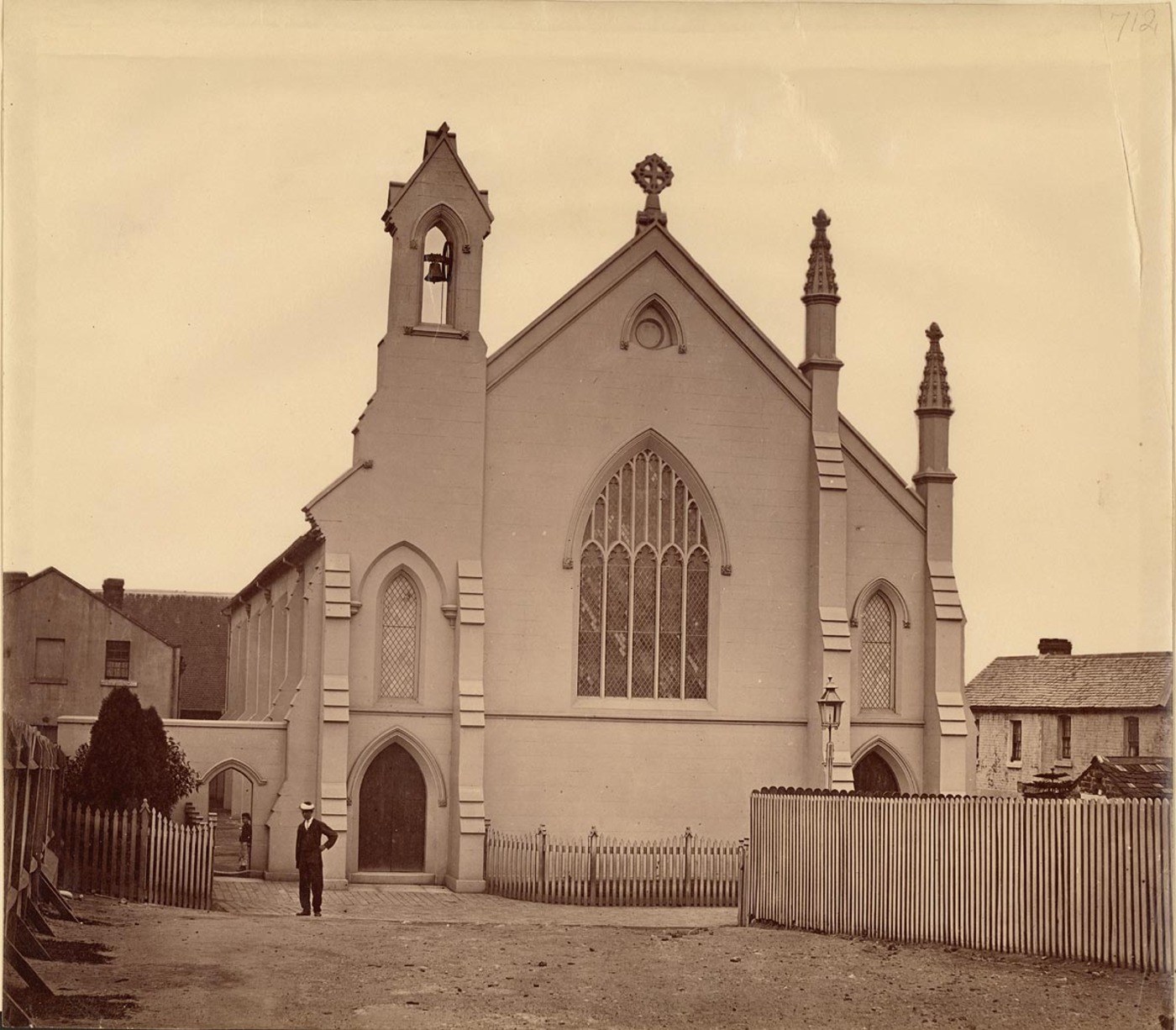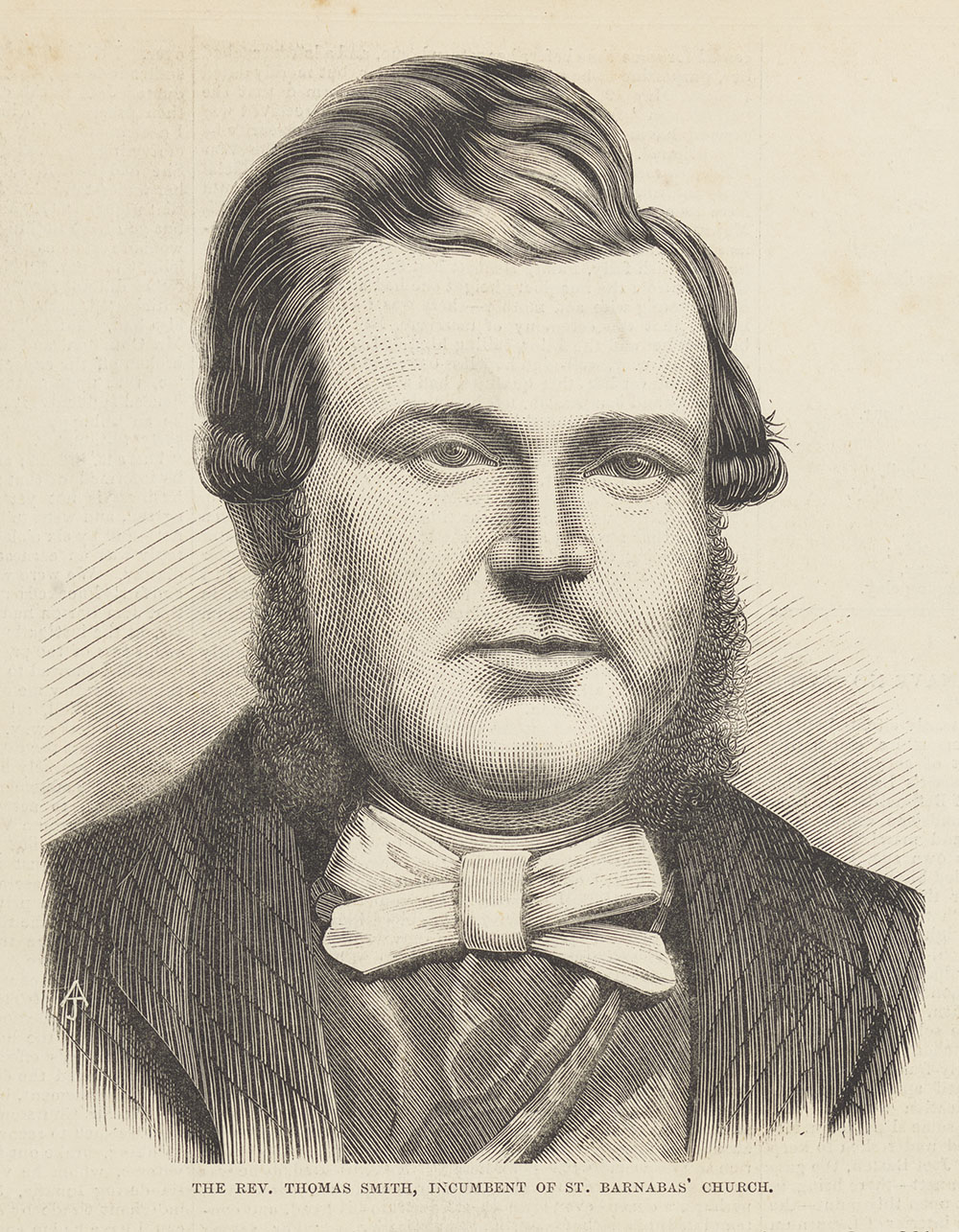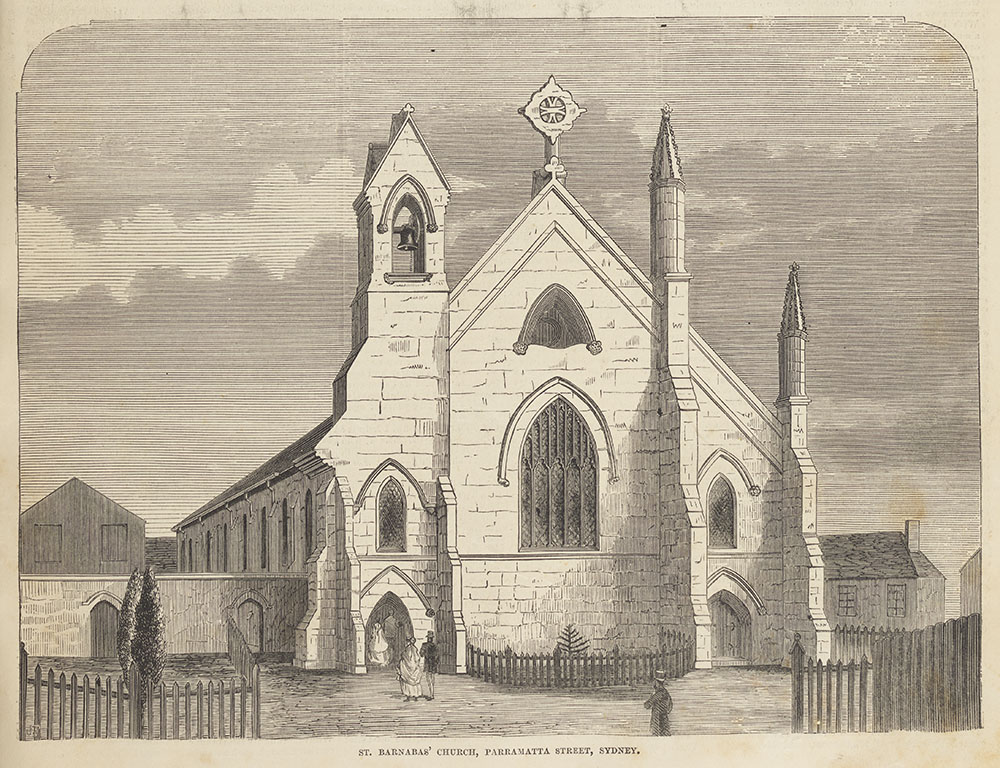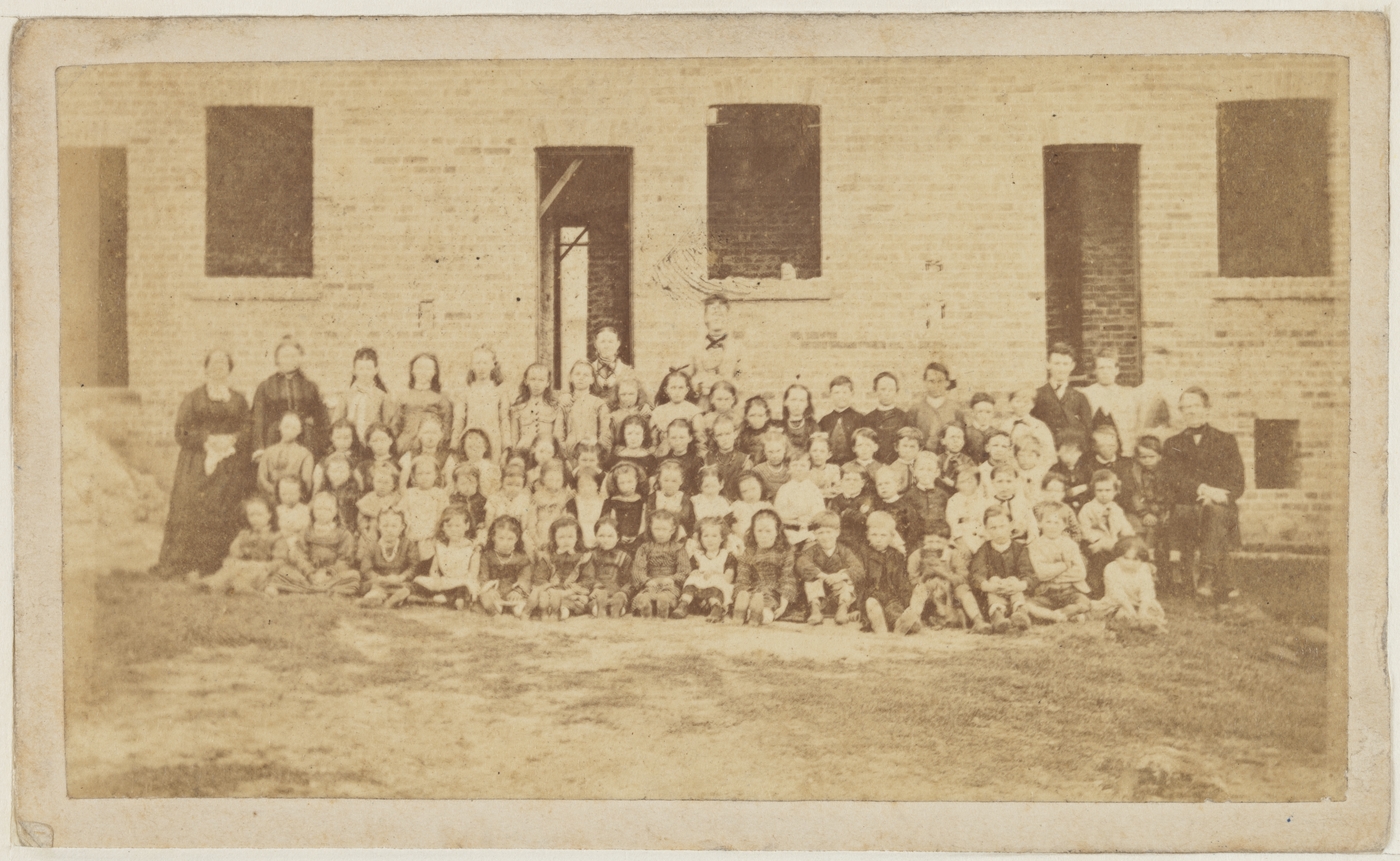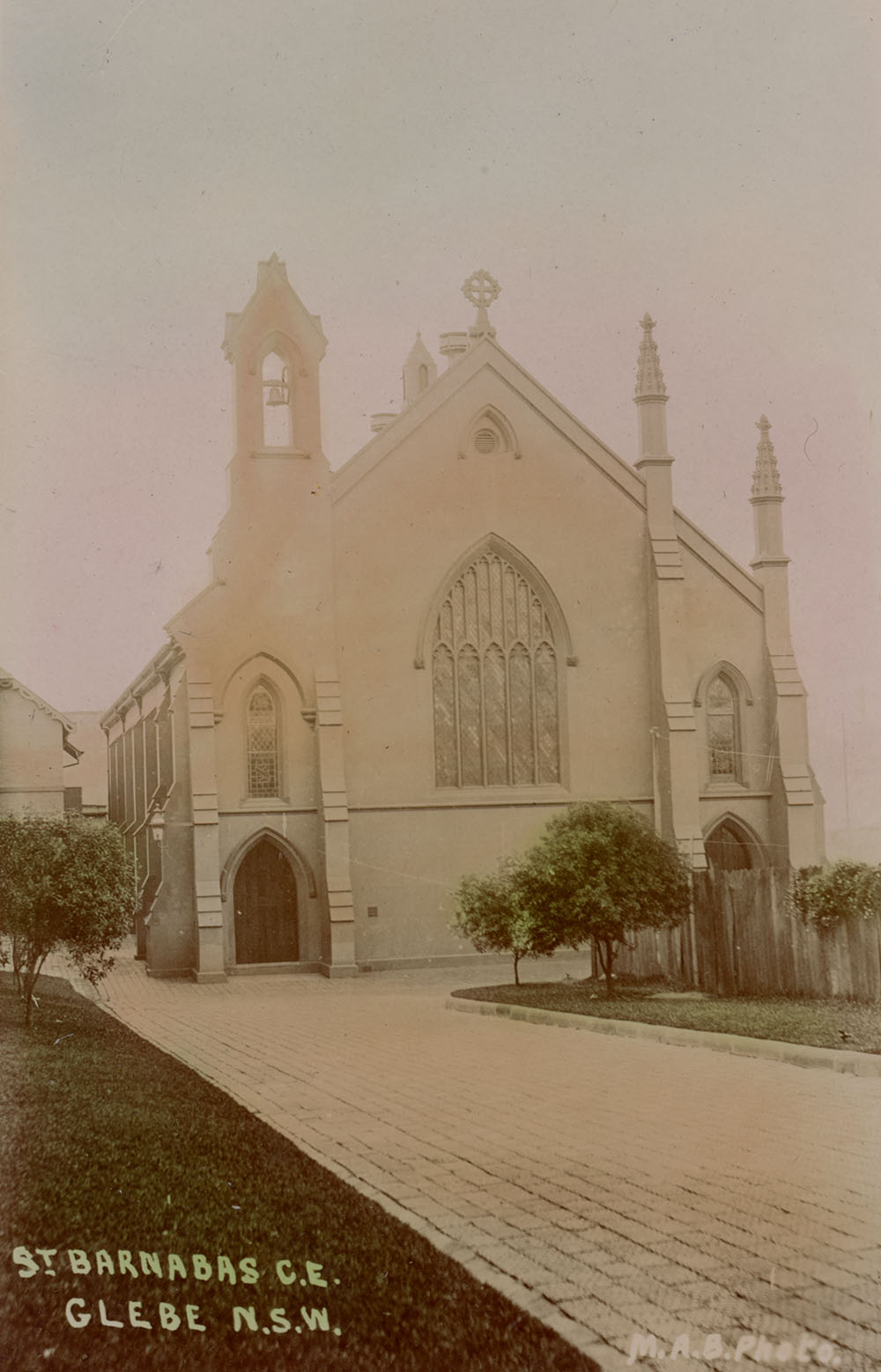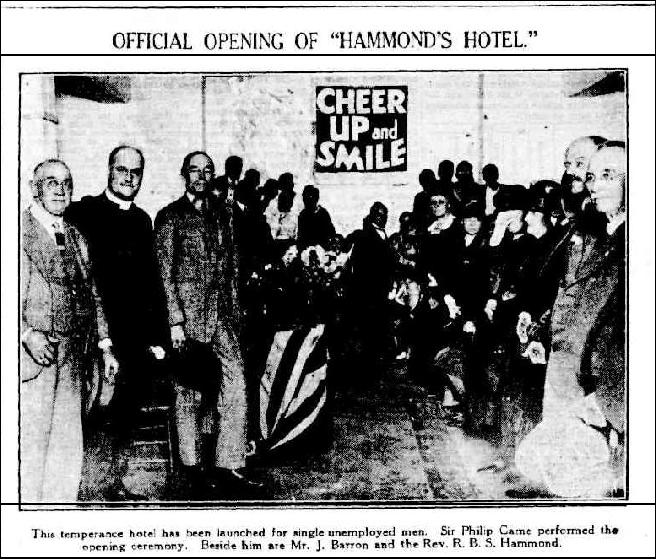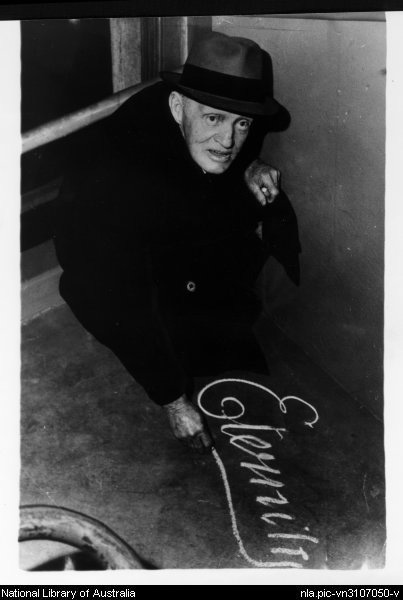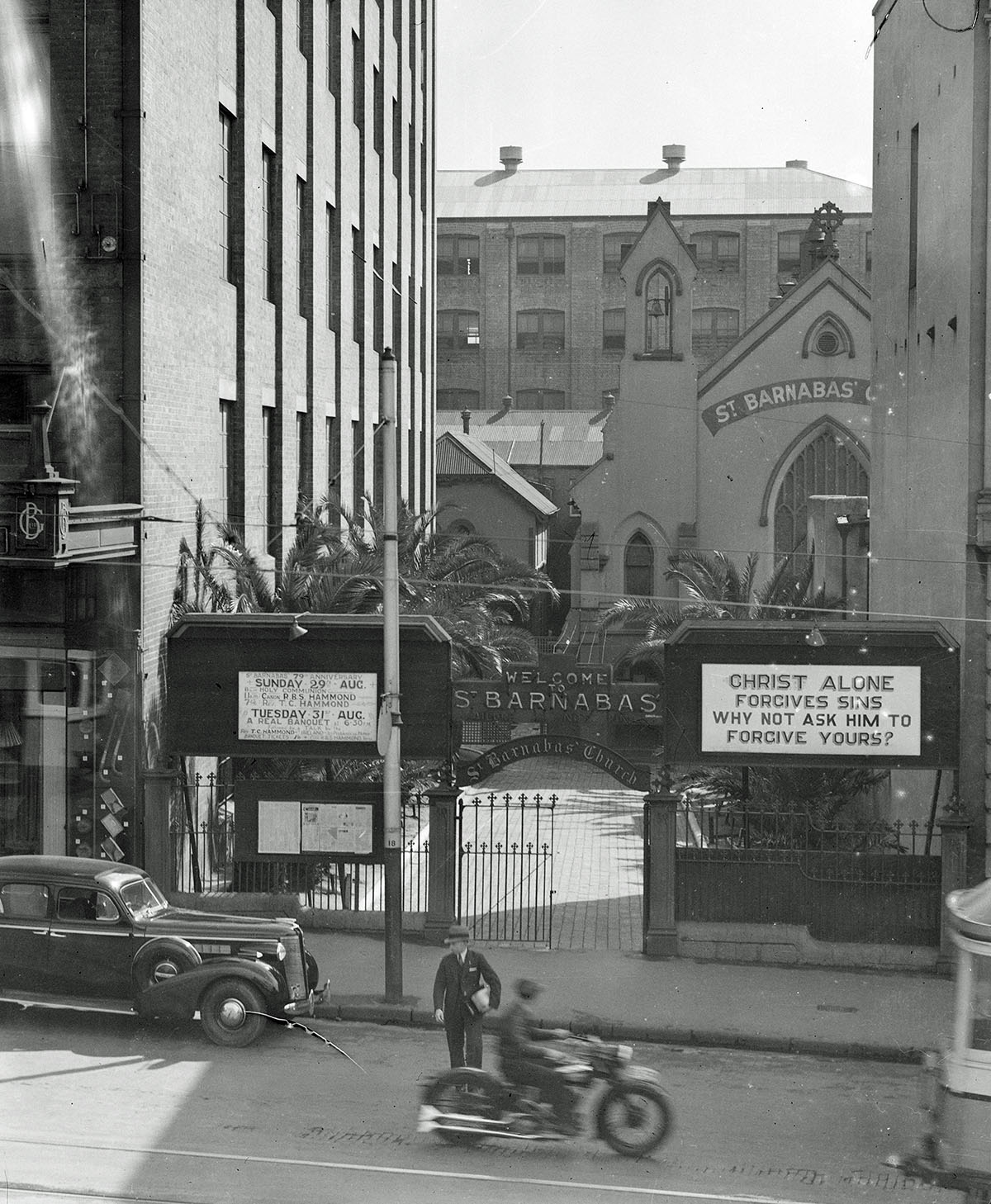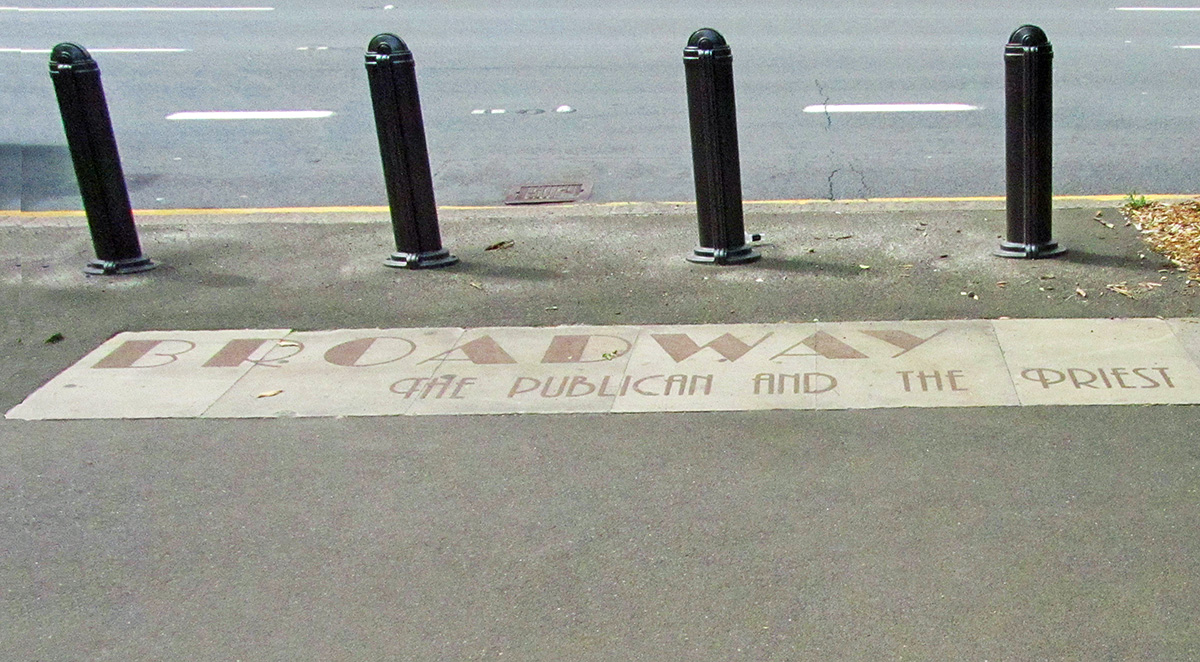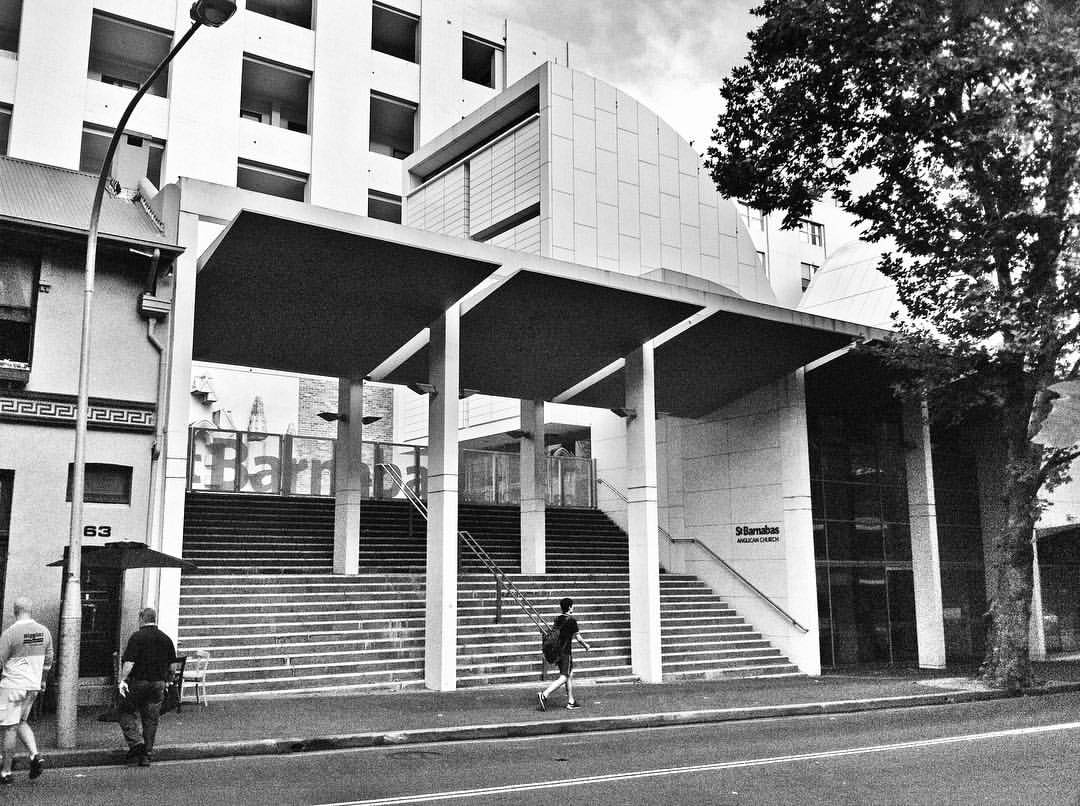The Dictionary of Sydney was archived in 2021.
St Barnabas' Anglican Church Broadway
Citation
Persistent URL for this entry
To cite this entry in text
To cite this entry in a Wikipedia footnote citation
To cite this entry as a Wikipedia External link
St Barnabas' Anglican Church
[media]St Barnabas' Church on Broadway, known to many as Barney's, was established in the mid-nineteenth century and has a long tradition of ministering to the disadvantaged and to students from local universities. It became renowned in the 1990s as the vicar and the publican across the road sparred via notice board slogans. The original building was destroyed by fire in May 2006 but the church was rebuilt and opened on 3 June 2012. The first new church built in the City of Sydney in 40 years, it was designed by the firm Francis-Jones Morehen Thorp to provide 'an oasis of gathering and worship within the busy noise of the city', and to convey 'the great sense of openness, welcoming and joy' that characterised the St Barnabas' Church community. [1]
A working class church
[media]The original St Barnabas' Church was established on the north side of 'Parramatta Street' in the mid nineteenth century. The area was then one of the most undesirable parts of the city, subject to the periodic flooding of Blackwattle Creek and dominated by industries including slaughterhouses, boiling down works, soap works and breweries. [2] In December 1857 the Anglican Bishop of Sydney, Frederic Barker, licensed Thomas Smith to work as a catechist among its working-class population. [media]Smith, a former tradesman and reformed drunkard, was well suited to the role. Within a year, his congregation had outgrown its meeting place in a rented shack 'in a most uninviting lane out of Parramatta Street', known popularly as 'Parson Smith's barn.' [3] Accordingly, Barker laid the foundation stone for a church and schoolhouse. [4]
St Barnabas' was a [media]stark contrast to the impressive Gothic revival buildings of the newly established University of Sydney, then under construction a few hundred metres away. It was 'not on a hill, to be viewed merely as a picturesque feature in the landscape.' Rather, as Barker explained, it was placed
…in the neighbourhood of squalor and where offensive sights and sounds continually arrested the senses of passers by...where it would be useful, and where the influences emanating from it were needed, and would be likely to be felt. [5]
Parson Smith [media]had uncommon success with the neighbourhood's working poor so extensions were soon required. During the summer of 1863-64, St Barnabas' was enlarged to accommodate a further 250 people, and extra land was acquired to provide a direct entrance from the main street. [6] In 1869 Smith claimed a congregation of 1200 and a Sunday school of 1000 pupils. [7] By the time of his departure from the parish in 1873, St Barnabas' was well established as a focal point for the local Glebe community.
The church's success continued through the late nineteenth century. In 1898 its annual Sunday school picnic attracted 1700 children, who made a noisy and colourful procession stretching all the way from the church to Central Railway Station. [8] Its working men's bible class, held weekly from the early 1890s, had a far more modest attendance but nevertheless underlined the uniqueness of St Barnabas' congregation in the mainly middle-class Diocese of Sydney.
The radiating church
[media]Early in the twentieth century St Barnabas' fell upon hard times. The population of the neighbourhood dropped dramatically, due to the resumption of lands by the City of Sydney and the closure of the Blackwattle Bay abattoir. The congregation shrank too and by 1912 its minister, Canon Charlton, felt the need to give up a portion of his stipend to help cover the shortage of revenue. [9]
The church continued its ministry to local working men but it was not until 1918, when the Rev RBS Hammond arrived as St Barnabas' new rector, that its ministry and reputation were revived. Hammond was an endlessly generous and energetic man in his late forties. He had previously worked as a parish minister in Surry Hills and as leader of the Mission Zone Fund, the Anglican effort to reach the slum population of Sydney. A witty speaker and compelling evangelist with considerable experience ministering to the lower classes, Hammond quickly transformed St Barnabas' from a struggling local church into one of Sydney's primary centres of poor relief.
[media]By the 1920s St Barnabas' social service outlay exceeded that of the rest of the Anglican Diocese. During the crisis of the 1930s depression its services included a busy soup kitchen, emergency furniture and clothing depot, an employment bureau and a series of 'Hammond Hotels' for unemployed men. The St Barnabas' Brotherhood of Christian Men, which Hammond formed from the remnant of the working men's bible class in 1918, regularly attracted 200 to 300 people to its Wednesday night meetings. [media]By the early 1940s the Brotherhood's formal membership exceeded 4000, including 'Eternity man' Arthur Stace, who converted to both Christ and temperance through Hammond's ministry.
Hammond's uncompromising commitment to temperance helped shape the work and profile of St Barnabas' Church. He and numerous volunteers from the congregation made regular visits to the 'drunks yard' at Central Police Court, where they urged people waiting to make their appearance to sign a temperance pledge. He also used the St Barnabas' notice board to promote the cause to the tens of thousands of people who travelled along Parramatta road each day. His remarks on temperance included
Alcohol makes your mind stagger long before your feet do
Drink and trouble are like petrol and fire
You married men look out – booze makes you see double but feel single.
Hammond also addressed other subjects
Do not nurse a grievance, teach it to walk
Divorce is the hash we make from domestic scraps
Give a politician a free hand and he is sure to put it in your pocket
God help the rich! The poor can manage on the dole. [10]
[media]An estimated 90 percent of passers-by read Hammond's message board. [11] Not all of them liked what it said. One Sunday in April 1938 it carried the slogan 'A few drinks may turn mans laughter into manslaughter.' At 2.00 am in the morning, a car pulled up outside the church, several men leaped out and tore down the calico notice from the board. They bundled it into the car and drove off at high speed. [12] Undeterred, Hammond continued to challenge and entertain Sydney with his one-liners until his retirement from St Barnabas in 1943.
A university church
Through the second half of the 20th century, St Barnabas' had a significant influence on the life and community of Sydney University. A post-war boom in tertiary enrolments, the increasing number of students resident in the area and the arrival, in 1949, of Howard Guinness as St Barnabas' new minister, reshaped St Barnabas' congregation. Guinness, a warm and vibrant evangelist, was a former travelling representative of Britain's Inter-Varsity Fellowship. During his first trip to Australia in 1930 he had established the Sydney University Evangelical Union, amongst other religious groups for secondary and tertiary students. [13] Guinness had continued his campus ministry during a second tour, in 1933-34. Then as parish minister of St Barnabas' from 1949 to 1957 he fostered a large and enthusiastic congregation of students.
The university connection remained significant even after Guinness's departure. St Barnabas' continued its active encouragement of the Evangelical Union and each successive rector served formally as Anglican chaplain to the University of Sydney. The church also developed an accommodation service centered on 'The Terraces', Glebe Point Road, which catered for students of Sydney University and, from the early 1990s, the new University of Technology Sydney (UTS). It also began providing informal support to Credo, the student Christian group at UTS. In 2012, approximately 14 percent of people resident within a five-kilometre radius of the church were tertiary students. St Barnabas' sought to cater for them with contemporary-style weekly services, including one specifically for overseas Chinese students, conducted in both Mandarin and English. [14]
St Barnabas' long-standing ministry to students helps explain its influence within and beyond the Diocese of Sydney. Generations of its student members have graduated and moved on to other parishes where, as well-educated adults, they have often assumed positions of responsibility and leadership. This contribution to the religious culture of the city should not be underestimated, but in the popular imagination, St Barnabas' is perhaps best known for its Broadway signboard and the witty slogans it exchanged with the pub across the road.
The priest and the publican
[media]The now-famous repartee began one day during the 1990s, when St Barnabas' minister Robert Forsyth used the church notice board to advertise a famous 'bikie pastor' as guest preacher: 'Hear John Smith this Sunday 7.15pm.' The Broadway Hotel then had a Jack Smith among its regular customers so its manager, Arthur Elliott, replied with a sign of his own: 'hear Jack Smith here every day.' [15]
The banter continued over subsequent months and years, and many commuters along Parramatta Road made a habit of first reading St Barnabas' notice board and then looking for a reply across the street.
CHURCH: You have nothing that God did not give you.
PUB: I know I have nothing – but I'm not sure who gave it to me!
CHURCH: Anyone wrapped up in themselves makes a very small package.
PUB: Good things come in small parcels.
CHURCH: God made sex for marriage not for money.
PUB: Wish he had made money for marriage! [16]
Sometimes, the priest and the publican offered pointed comments on the values and beliefs of the other.
CHURCH: If God offered you heaven or hell, which would you choose?
PUB: I'd choose a hell of a good time in heaven.
CHURCH: The liquor bar – a bar to heaven, a gateway to hell, whoever named it, named it well!
PUB: A bar in heaven, a long way from hell, with a barman called Jesus who will serve you well. [17]
Over time, a genuine friendship developed between the rival sign writers. Forsyth later said they found they
…had more in common than just operating on the same street and presiding over places where people meet for reflection and solace. We are both fascinated by the same extraordinary man, Jesus. [18]
Elliott was serious enough to invite Forsyth to conduct the wedding of his daughter, and to self-publish a booklet of reflections on the Jesus of the Gospels
I like to remind people that Jesus was a real man. I even said to Rob once 'If Jesus walked down Broadway he'd come into my pub and have a drink and meet the blokes'...and Rob agreed with me. [19]
Fire and recovery
[media]The church signboard survived the fire that, in the early hours of 10 May 2006, gutted most of the building. Over subsequent days many Sydneysiders who had celebrated baptisms, witnessed marriages, mourned loved ones or worshipped God at St Barnabas' paid a farewell visit to the burnt-out site. Church member Rowena Whittle said 'It was like losing the family home, all the memories and historical belongings lost in the fire'. [20]
[media]Reconstruction took six years, during which time the St Barnabas congregation met at Moore Theological College, Newtown. The congregation continued to reflect the transience of the area's population and the turnover in its members remained high. Perhaps half of those who went 'back to Barneys' had never worshipped in the old building. The new church catered to a transient, multicultural congregation with an average age of 27 as well as a wider neighbourhood marked by rapid change and development.
[media]The new building expressed some continuity, nevertheless. Some of its internal spaces were named for former rectors Smith, Hammond and Guinness. Outside, a heritage wall featured bricks from the old building and seats made from surviving pews. The old church gates, through which 'Eternity man' and thousands of other Sydneysiders had once walked, were rebuilt in the side garden. [21] The new building also expressed St Barnabas' vision of its ongoing contribution to the city. Strikingly modern, open and accessible, it provides a number of versatile community spaces under a simple but soaring cross.
Further reading
Arthur Elliott. The Publican and the Priest. Sydney: Artway Publications, 1992.
Stephen Judd and Kenneth Cable. Sydney Anglicans: a history of the Diocese. Sydney: Anglican Information Office, 1987.
Meredith Lake. Proclaiming Jesus Christ as Lord: a History of the Sydney University Evangelical Union. Sydney: EU Graduates Fund, 2005.
Meredith Lake. Faith in Action: HammondCare. Sydney: UNSW Press, 2013.
Notes
[1] 'Our Building', Barneys [St Barnabas Church], https://www.barneys.org.au/who-we-are/our-building/, viewed 8 July 2015; 'Projects', Frances-Jones Morehen Thorp, http://www.fjmt.com.au/projects/projects_stb.html, viewed 13 June 2012
[2] See Shirley Fitzgerald, Chippendale: Beneath the Factory Wall (Ultimo: Halstead Press, 2008), 26-42 for details of the evolution of this area
[3] 'My life and the Rev Smith', The Empire, 17 October 1858, 3
[4] The foundation stone was laid 27 August 1858
[5] 'The Episcopalian church society' The Empire, 26 October 1859, 5
[6] 'St Barnabas' Church', Sydney Morning Herald, 3 December 1863, 5
[7] Ruth Teale, 'Smith, Thomas (1829–1882)', Australian Dictionary of Biography, National Centre of Biography, Australian National University, http://adb.anu.edu.au/biography/smith-thomas-4618/text7603, viewed 28 June 2012
[8] 'St Barnabas Sunday School Picnic', Sydney Morning Herald, 14 October 1898, 5
[9] 'Anglican Synod: the church and freeholds', Sydney Morning Herald, 10 Oct 1912, 13
[10] RBS Hammond, 290 'Sermons in Slogans' from Archdeacon Hammond's famous 'Weekly Message Board' at St Barnabas Church, Broadway, Sydney, NSW Australia', nd
[11] 'Famous Church notice board', Cairns Post, 27 December 1948, 1
[12] 'Weekly Message Board torn down' Sydney Morning Herald, 25 April 1938, 9
[13] Stuart Braga, 'Guinness, Howard Wyndham', in Australian Dictionary of Evangelical Biography, ed Brian Dickey, http://webjournals.ac.edu.au/journals/adeb/g_/guinness-howard-wyndham-1903-1979/, viewed 22 June 2012
[14] Statistic from 'Our Vision', Barneys [St Barnabas Church], http://www.barneys.org.au/page/120/Our+Vision,accessed 22 Nov 2012
[15] Arthur Elliott, The Publican and the Priest, (Sydney: Artway Publications, 1992), 8-9
[16] Arthur Elliott, The Publican and the Priest, (Sydney: Artway Publications, 1992)
[17] Arthur Elliott, The Publican and the Priest, (Sydney: Artway Publications, 1992)
[18] Robert Forsyth, Foreword to Arthur Elliott, The Publican and the Priest, (Sydney: Artway Publications, 1992), 4
[19] Arthur Elliott, The Publican and the Priest, (Sydney: Artway Publications, 1992), 39
[20] Barneys [St Barnabas' Church] website, http://www.barneys.org.au/page/163/The+Fire, viewed 22 November 2012
[21] Russell Powell, 'Barneys turns a friendlier face towards Broadway', Sydney Anglicans Gateway to the Anglican Church in Sydney, 5 June 2012, http://sydneyanglicans.net/news/stories/barneys-turns-a-friendlier-face-towards-broadway, viewed 8 July 2015
.




